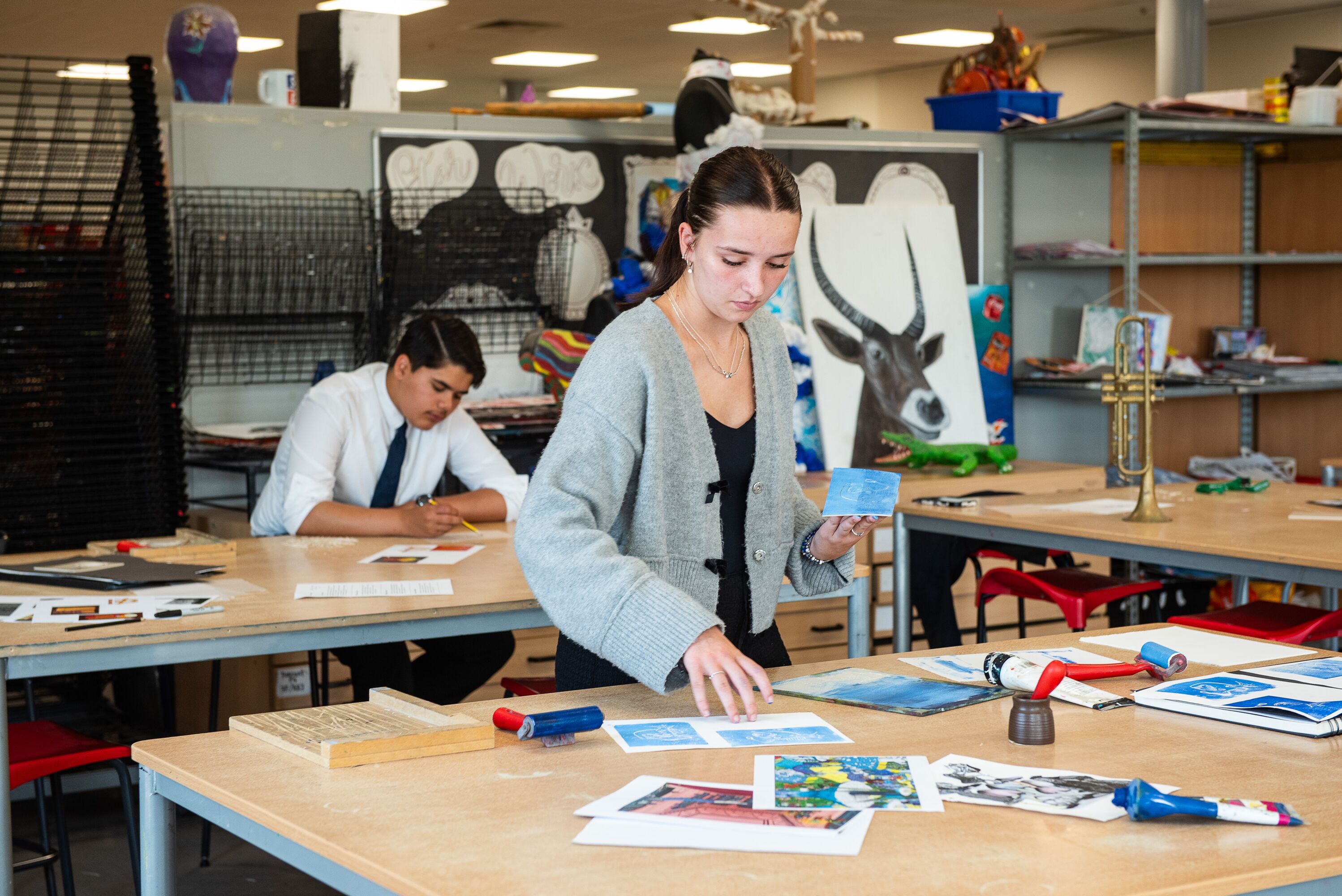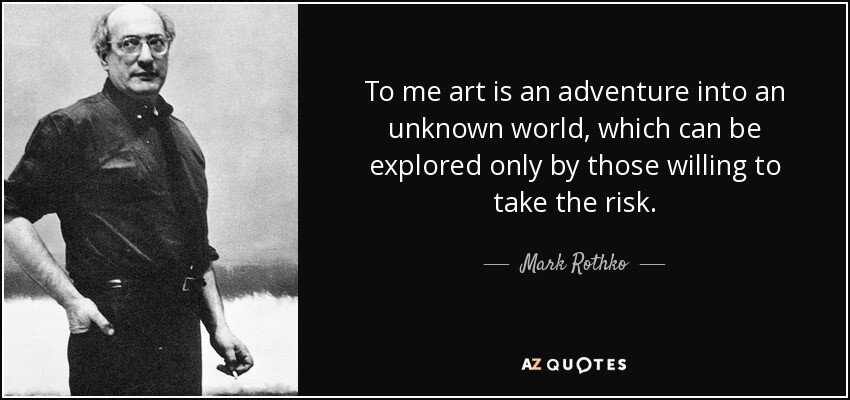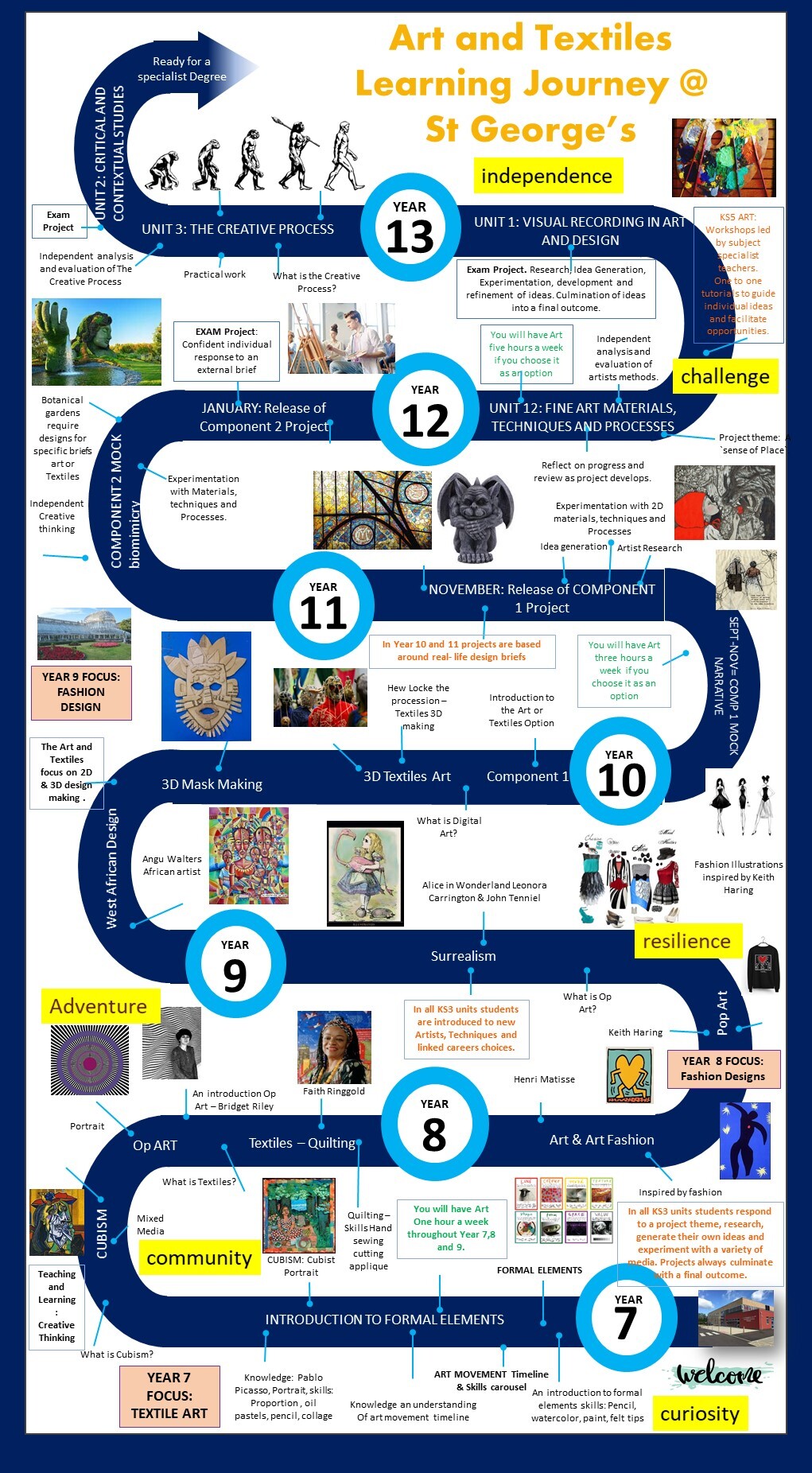Art and Design (Level 2 and 3 BTEC)

General Subject Information
INTENT
How the Art curriculum fits into our Whole School Vision:
ADVENTURE-

Our Art curriculum offers an engaging and stimulating adventure into the world of art and design. Beginning with developing personal and individual responses to various themes.
Pupils go on a personal adventure through exploration and investigation into the history of Art and taking a journey with a range of artists/designers and as they are introduced to diverse sources of inspiration, from beyond their usual environment.
RESILIENCE
Pupils develop their resilience as they move through their Art Curriculum. They are introduced to a diverse range of sources that challenge ideas about what they might previously know. Pupils explore a range of materials, techniques and processes including; Mod-roc, wire, plasticine, clay, Printmaking, cardboard relief where building upon their resilience is necessary when acquiring new skills, and using it to develop their visual language through refinement.
INDEPENDENCE
Great Art is not possible without independence. To attain the best outcomes pupils must tread their own path and be willing to take risks. For all projects it is embedded that expectations are for pupils to develop an individual idea, that is led by personal interest in the subject matter and therefore is pursued independently. Art teachers facilitate the development of all knowledge and skills required, however pupil independence is the driving force that leads to their own success and achievement.
CHALLENGE
Art is all about challenge. To challenge the way we think and the way we interpret the world around us in order to make sense of it. Not only is art about challenging the way we think and see it also challenges ourselves in a practical sense. Adventure in art lies in pushing boundaries, embracing experimentation, and encouraging students to take risks. Art is taught with an adventurous approach allowing students to discover their unique voices and forge their own artistic paths, leading them to new horizons of self-expression and personal growth.
CURIOUSITY
By providing a safe and supportive environment, we encourage students to think creatively and express themselves artistically. We promote a playfulness with materials that allow the curiosity of a student to develop their own practical skills. To understand their own practice, they are introduced to diverse range of artists through history and by unravelling the mysteries of their artistic journeys, students embark on an adventure through time, unravelling the stories, inspirations, and daring choices that shaped the art world, enabling them to appreciate and interpret art with a deeper perspective.
COMMUNITY
We believe that art is not just about creativity, but also about building a strong and inclusive community. Through art, we provide a platform for students to reflect on and explore the world around them. By using various artistic mediums, students develop a deeper understanding of their environment, society, and the diverse perspectives that shape our lives. We encourage a collaborative atmosphere where students can share ideas, engage in thoughtful discussions, and inspire one another. Art becomes a powerful tool for self-expression, allowing individuals to communicate their unique voices, experiences, and emotions, enriching our community through their creative expressions.
IMPLEMENTATION
The Art curriculum has been designed with the intention of providing our students with the skills required to tackle the formal assessment & summative assessments as well the ongoing development of an art portfolio.
Teachers will present subject content clearly, promoting students own development of art related outcomes, as well as research into individual artists that link to the course. Teachers will deliver a selection of art skilled workshops throughout the two-year course to ensure students’ knowledge and techniques progress.
Our Learning Journey

Staff
KS4 Revision - Level 2 Tech Award
General Information (useful information for Parents)
Pupils` will have a practical Art exam at the end of their two year course and are encouraged to practice independent experimentation with a range of materials, techniques and processes in preparation. Art rooms and resources are available for BTEC Art students afterschool when this is pre-arranged with the students Art teacher.
BTEC Level 1/2 Tech Award in Art and Design Practice (2022)
This course starts in Term 6 of Year 9 and is completed at the end of Year 11. There are two Components for this course. Component 1 is a project set by Pearson that is released in the November of Year 10. This component is completed under supervised conditions. The component is marked internally and moderated by Pearson. The marks gained for this component are worth 60% of the final grade awarded at the end of Year 11. Component 2 is released in February (Year 11). This component is set by Pearson and marked by Pearson. It is worth 40% of the final grade awarded at the end of Year 11. The skills and knowledge needed to be successful in both Component 1 and 2 are delivered in the form of in class projects, prior to the release of components. Pupils are encouraged to make the most of this opportunity and listen carefully to feedback provided that will enable development of this knowledge and skill.
| Personal Learning Checklists | to follow |
|---|---|
| Example Exam Questions/Model Answers | to follow |
| Revision Materials/Sharepoint | to follow |
KS5 Revision - Level 3 National
| Personal Learning Checklists | Click Here |
|---|---|
| Example Exam Questions/Model Answers | |
| Revision Materials/Sharepoint |
Year 12 Unit 1 (Exam) Sample Assessment material Sample-assessment-material-Unit-1-Visual-Recording-And-Communication.pdf (pearson.com) Sample Marked Learner work Unit 1 (Exam) BTEC Level 3 National in Art & Design (pearson.com) Year 13 Unit 2 (Exam) Sample Assessment material. Part A & Part B. Sample marked learner work (Unit 2) - BTEC Level 3 National in Art & Design (pearson.com) Sixth Form revision - Key vocabulary |
BTEC Level 3 National Certificate in Art and Design
For the written element students will be assessed on;
A01- Understand how recording is used to communicate visually in the work of others
A02- Demonstrate understanding of visual communication through exploration of different methods of recording
A03- Demonstrate ability to record to communicate intentions
A04- Evaluate visual recording and communication skills
BTEC Level 3 National Extended Certificate in Art and Design
Students complete Unit 2: Critical and Contextual Studies in Art and Design, as their externally set unit. The exam project will be released in April and students will have time to complete contextual research in preparation for their exam. At the end of this prep work students will sit a five hour supervised written exam where they will be asked to analyse and evaluate the work of artists, based around a set theme.
Students will be assessed on;
A01- Be able to apply an effective investigation process to inform understanding of creative practitioners
A02- Demonstrate the ability to visually analyse the work of creative practitioners
A03- Demonstrate understanding of how contextual factors relate to creative practitioners` work
A04- Communicate independent judgements demonstrating understanding of the work of creative practitioners
Job Opportunities / Careers
Fine artist
Fine artists create original works of art. This can be in any medium, such as paint, wood, metal or textiles. What distinguishes the work of fine artists from most other careers on this list is that its purpose is purely to be a work of art, rather than to add visual appeal to something with a functional purpose (such as making a building, clothing item or webpage look good). Fine artists make money by selling their work, and many have another job too to give them a regular, reliable income. You don’t have to have qualifications in art to be an artist, but a degree in art is a typical starting point.
Art Lecturer
As an Higher Education lecturer, you'll need expertise in your subject area in order to teach students. Teaching methods include lectures, seminars, tutorials, practical demonstrations, field work and e-learning. Multimedia technologies are becoming increasingly used.
Animator
There are many different types of animation, including 2D, stop-motion, 3D hand-drawn and computer-generated, but all roles call for high levels of creativity and passion
An animator produces multiple images called frames, which when sequenced together create an illusion of movement - this is known as animation. The images can be made up of digital or hand-drawn pictures, models or puppets.
Animators tend to work in 2D, 3D model-making, stop-frame or computer-generated animation.
Computer-generated animation features strongly in motion pictures (to create special effects or an animated film in its own right), as well as in aspects of television, the Internet and the computer games industry.
The basic skill of animation still relies heavily on artistic ability, but there is an increasing need for animators to be familiar with technical computer packages.
Ceramics Designer
Ceramics designers create designs for a range of pottery objects that are then made by shaping and firing clay.
As a ceramics designer, you'll create designs for a range of objects and work with materials such as clay, porcelain, bone china and stoneware to make the products. You'll usually also paint or glaze the item to finish it off.
Alternative titles for this role include ceramicist and potter.
Conservator
Conservators need to know how to care for artefacts, how they deteriorate and how to give them a new lease of life
As a conservator, you'll care for cultural collections by applying scientific methods to preserve and restore artefacts.
Depending on which area of conservation you're working in, you may be involved in treating objects directly - known as remedial conservation - to prevent deterioration, stabilise the object and undertake restoration (if appropriate), or you might focus on monitoring and controlling the environment in which collections are stored or displayed to prevent deterioration in the first place - this is known as preventive conservation. In some roles, you'll work on a combination of the two.
Many conservators work in museums and galleries. However, many others are self-employed and work on a freelance basis.
Exhibition designer
As an exhibition designer, you'll work on large commercial public exhibitions, showcase events, trade shows and conferences for trade, industry or education, or on cultural exhibitions for museums, libraries and galleries. You might also work on temporary displays for businesses and retailers.
You'll be responsible for creating an exhibition that works on several levels. It must:
- have aesthetic appeal
- be practical
- communicate the client's message, concept and image to visitors
- meet the limitations imposed by space and budget.
You'll base your designs on your interpretation of the client's ideas and requirements and will also provide your own ideas in relation to product concept and customer appeal.
Some designers also have responsibility for overseeing the implementation and building of the exhibition or display stand, while others will specialise in just one specific area.
Game Artist
Game artists use software packages to create the visual elements of a game in either 3D or 2D for one or more platforms, such as mobile, PC, arcade or console.
You'll typically work as part of a multidisciplinary team with designers, developers, animators and quality assurance testers, as well as those involved in the management and marketing of the game.
Job titles vary and may include 3D artist, games artist, environment artist, character artist, texture artist or lighting artist.
Illustrator
Illustrators are commissioned to create still drawings and images to communicate a story, message or idea, which are then used in advertisements, books, magazines, packaging, greeting cards and newspapers.
You'll work to commercial briefs to inform, persuade or entertain a client's intended audience, adjusting the mood and style of images accordingly.
You'll typically specialise in a particular design medium, such as drawing, photography or digital illustration.
Product Designer
As a product designer you'll create a range of items, from everyday products such as mobile phones, household appliances and cars, to larger items such as industrial tools, equipment and machinery.
You might work on new products or improve existing ones, and use your understanding of technology, materials and manufacturing methods to improve the design and usability of an item. The work involves:
- designing
- modelling
- prototyping
- testing.
For more inspiration about Art based careers visit:
https://www.prospects.ac.uk/job-profiles/browse-sector/creative-arts-and-design
Useful links to universities
degrees within art based subjects
https://www.gold.ac.uk/ug/ba-fine-art/ = BA FINE ART
https://www.northampton.ac.uk/courses/fine-art-painting-and-drawing/ = Fine Art Painting and Drawing BA (Hons)
https://www.uca.ac.uk/study/courses/ba-illustration/ = Illustration BA (Hons)
http://www.gsa.ac.uk/study/undergraduate-degrees/interior-design/ = BA(Hons) Interior Design
Homework
Year 10, 11 and 6th Form – Thursdays with Miss Deed


